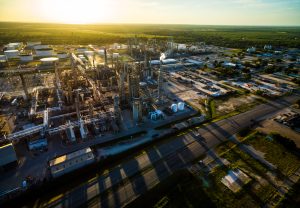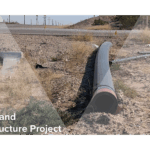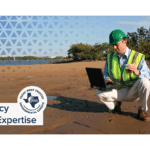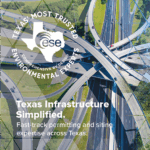
Environmental site assessments play a crucial role in understanding and managing potential environmental risks. In Midwest City, Phase 2 assessments are conducted to further investigate sites where potential contamination has been identified during Phase 1 assessments. Understanding the purpose, process, and implications of these assessments is essential for ensuring the proper management and remediation of contaminated sites in the area.
Understanding Phase 2 Environmental Site Assessments
Phase 2 environmental site assessments are carried out to gather more detailed information about the presence and extent of contamination at a site. While Phase 1 assessments focus on identifying potential risks, Phase 2 assessments involve a more comprehensive investigation that includes sampling and analysis to accurately determine the nature and concentration of contaminants. This information is then used to assess the potential impacts on human health and the environment, as well as to develop appropriate remediation strategies.
The Purpose of Phase 2 Assessments
The primary purpose of Phase 2 environmental site assessments is to evaluate the presence and extent of contamination at a site. By conducting these assessments, environmental professionals can assess the potential risks associated with the contamination and determine whether further action, such as remediation, is required. Additionally, Phase 2 assessments provide valuable data for regulatory compliance and help stakeholders make informed decisions regarding the site’s future use.
Key Components of Phase 2 Assessments
Phase 2 assessments involve several key components that collectively contribute to a thorough evaluation of the site. An initial site inspection is conducted to identify potential sources of contamination and determine the most appropriate sampling locations. Samples are then collected from various media, such as soil and groundwater, and sent to accredited laboratories for analysis. The results are evaluated in the context of applicable guidelines and regulations to assess the contamination levels and potential risks.
It’s important to note that Phase 2 assessments are not a one-size-fits-all approach. The specific components and methods employed may vary depending on site-specific factors, such as the nature of the suspected contamination and the site’s history of land use.
The Process of Conducting Phase 2 Assessments in Midwest City
Conducting Phase 2 environmental site assessments in Midwest City involves a systematic and rigorous approach. The process generally consists of three main stages: initial site inspection, sampling and analysis, and risk assessment.
Initial Site Inspection
During the initial site inspection, environmental professionals visit the site and conduct a thorough visual assessment. They identify potential sources of contamination and determine the areas where sampling should be conducted. This step is crucial for understanding the site’s history, existing infrastructure, and potential risks associated with nearby activities.
By carefully examining the site and its surroundings, environmental professionals can gather valuable information that guides the subsequent steps of the assessment process. This includes determining the most appropriate sampling locations and selecting suitable analytical methods.
Sampling and Analysis
Sampling and analysis are integral parts of Phase 2 environmental site assessments. Samples are collected from various media, such as soil, groundwater, and surface water, depending on the nature of the suspected contamination. The selection of sampling locations and techniques is based on the information gathered during the initial site inspection.
These samples are then sent to accredited laboratories for analysis, where they undergo rigorous testing to determine the presence and concentration of contaminants. The results are compared against applicable guidelines and regulations to assess the contamination levels and potential risks.
The sampling and analysis phase requires careful planning and execution to ensure accurate and representative results. Environmental professionals follow established protocols to minimize the potential for cross-contamination and preserve the integrity of the samples.
Risk Assessment
Once the sampling and analysis phase is complete, a risk assessment is performed to evaluate the potential impacts of the contamination on human health and the environment. This assessment takes into account factors such as the types and concentrations of contaminants detected, exposure pathways, and receptors.
During the risk assessment, environmental professionals compare the contaminant concentrations against relevant regulatory standards and guidelines. This allows them to determine whether the contamination poses an unacceptable risk and whether further action, such as remediation, is necessary.
Interpreting the Results of Phase 2 Assessments
Interpreting the results of Phase 2 environmental site assessments is a critical step in the overall assessment process. Environmental professionals carefully analyze the data obtained from the sampling and analysis phase to understand the contamination levels and potential risks associated with the site.
Understanding Contamination Levels
The data obtained from sampling and analysis provide insights into the concentration of contaminants present at the site. This information is compared against regulatory standards and guidelines to determine whether the contamination exceeds acceptable levels. By understanding the contamination levels, environmental professionals can assess the potential risks and develop appropriate remediation strategies.
Potential Impacts on Human Health and Environment
An essential aspect of interpreting Phase 2 assessment results is assessing the potential impacts on human health and the environment. By considering factors such as exposure pathways and receptors, environmental professionals can determine the risks associated with the contamination.
Based on the findings, stakeholders can evaluate the potential ramifications for human health, ecological systems, and surrounding communities. This information is crucial for making informed decisions about site management and potential remediation efforts.
Legal and Regulatory Aspects of Phase 2 Assessments
Phase 2 environmental site assessments in Midwest City must comply with both local and federal regulations. These assessments are subject to specific legal requirements and guidelines, ensuring that the assessment and subsequent actions are conducted responsibly and in accordance with applicable standards.
Compliance with Local and Federal Regulations
When conducting Phase 2 assessments, environmental professionals must adhere to the relevant regulations and guidelines set forth by local and federal authorities. These regulations outline the procedures, requirements, and criteria for assessing and managing contaminated sites.
By complying with these regulations, stakeholders can ensure that the assessments are conducted accurately and that any necessary remediation activities follow appropriate protocols. Compliance also helps protect the rights and interests of all parties involved and fosters environmental stewardship.
Legal Implications of Assessment Findings
The findings of Phase 2 assessments can have legal implications for property owners and other stakeholders. Depending on the severity and extent of contamination, legal requirements, such as reporting obligations, may be triggered. It is essential for property owners to be aware of these implications and fulfill their legal responsibilities accordingly.
Furthermore, the assessment findings may impact property transactions and financing. Disclosure of contamination and potential risks associated with a site can influence the negotiations and decision-making process. Being aware of the legal implications allows stakeholders to take appropriate actions and protect their interests.
Remediation Strategies Following Phase 2 Assessments
Once Phase 2 assessments have been completed and the contamination levels and potential risks have been determined, appropriate remediation strategies can be devised. These strategies aim to address the identified contamination and mitigate any potential adverse impacts on human health and the environment.
Remediation Options for Soil Contamination
Soil contamination is a common issue identified during Phase 2 assessments. Depending on the nature and extent of the contamination, different remediation options may be applicable. These options can range from physical removal and disposal of contaminated soil to in-situ treatment methods that aim to either stabilize or remove the contaminants.
The selection of the remediation option depends on various factors, such as the type of soil, contaminant characteristics, site accessibility, and future land use plans. Environmental professionals work closely with property owners and regulatory authorities to identify the most effective and feasible remediation strategy.
Strategies for Groundwater Remediation
Contaminated groundwater poses its own set of challenges and requires specific remediation strategies. The selection of groundwater remediation methods takes into account factors such as the hydrogeology of the site, the characteristics of the contaminants, and the desired cleanup goals.
Common groundwater remediation techniques include pump-and-treat systems, where contaminated groundwater is pumped to the surface for treatment, and in-situ remediation methods, which involve the treatment of groundwater within the subsurface. The choice of the appropriate strategy depends on site-specific conditions and the desired remediation objectives.
It is important to note that remediation efforts following Phase 2 assessments may extend beyond the initial cleanup. Long-term monitoring and maintenance can be necessary to ensure the effectiveness of the remediation strategies and to verify that the site has been successfully restored.
In conclusion, Phase 2 environmental site assessments in Midwest City are essential for identifying and evaluating potential contamination and associated risks. By following a systematic evaluation process, accurately interpreting assessment results, and complying with legal and regulatory requirements, stakeholders can make informed decisions regarding site management and remediation. Effective and appropriate remediation strategies ensure the protection of human health and the environment, while also promoting sustainable land use and development in the region.
If you’re facing environmental challenges or need a comprehensive Phase 2 Environmental Site Assessment in Midwest City, look no further than ESE Partners. Our team of experienced environmental engineers and scientists is dedicated to responsibly moving your business forward through innovative and sustainable environmental solutions. With a strong presence in major markets and a deep understanding of environmental regulations, we’re equipped to provide the due diligence, remediation, and compliance services you need to navigate complex environmental issues. Let us help you improve your community’s quality of life while recognizing and delivering opportunities for your stakeholders. Request A Proposal! today and partner with ESE Partners for honest, quality-driven results.








